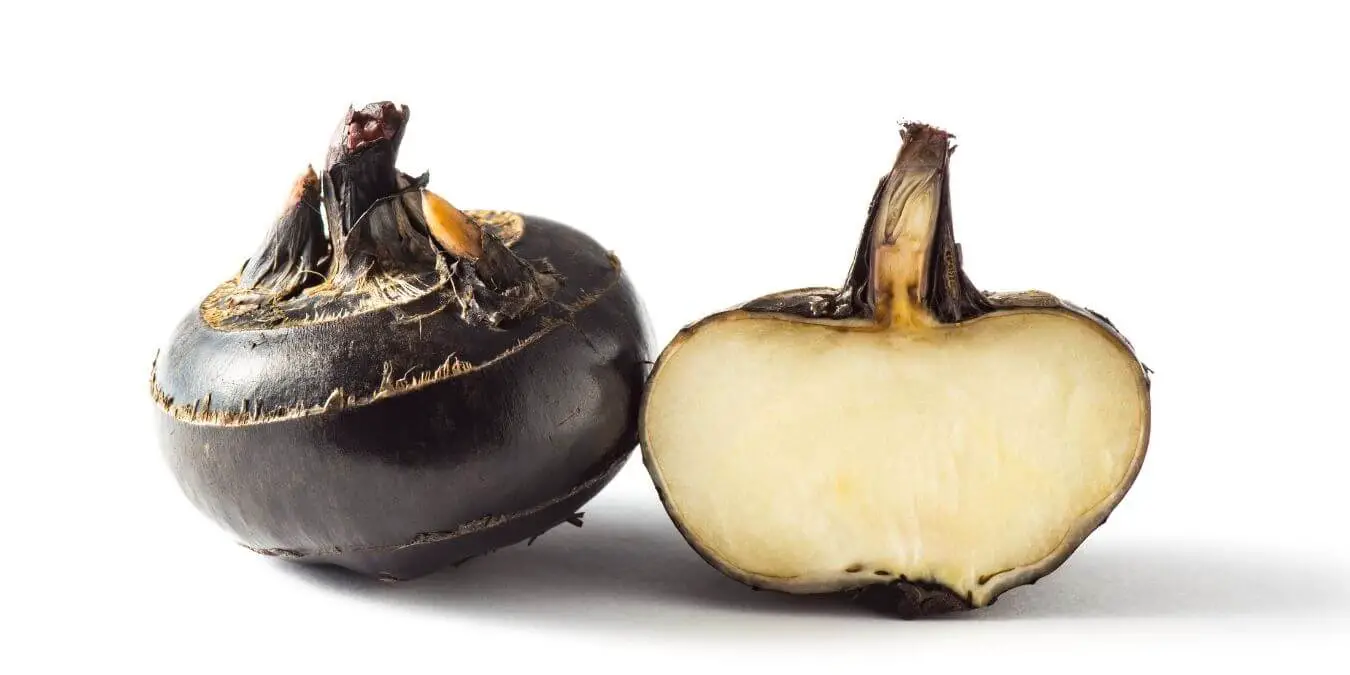Whenever I want a tasty stir fry – one with lots of crisp veggies and lean, healthy proteins simmered in a savory sauce – it always seems like I’m lacking at least one or two of the ingredients. Unfortunately, some of these ingredients can make all of the difference. One of the most common of these ingredients is water chestnuts.
Fresh water chestnuts can be hard to find in the produce section of your local supermarket. Unless you have an Asian market nearby and regularly keep your pantry stocked with ingredients commonly used in Chinese cuisine, it’s likely that you have left water chestnuts out of recipes before simply because you didn’t have them on hand.
Don’t worry, there are lots of ways that you can easily substitute for water chestnuts in your recipes. We’re going to look at five great ways that you can substitute for fresh water chestnuts in any recipe.
What are Water Chestnuts?
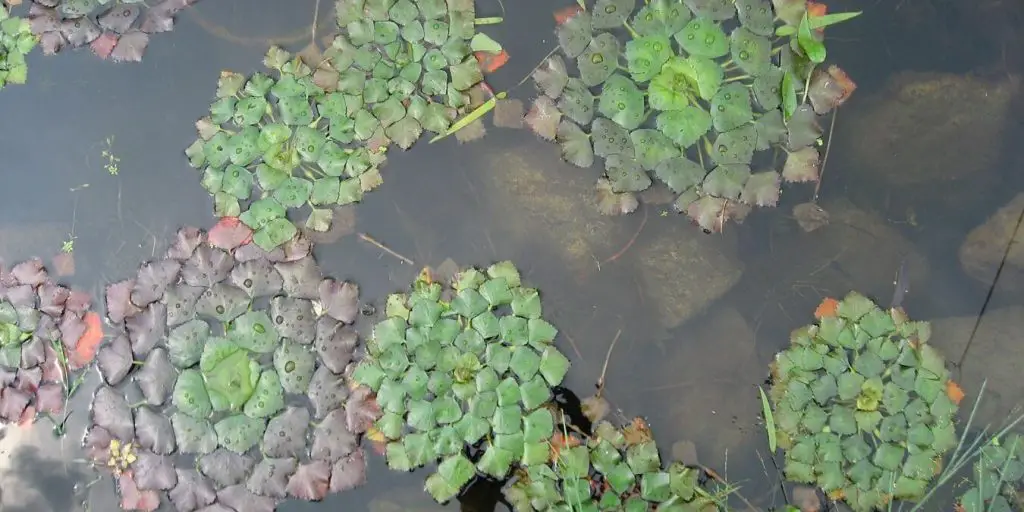
Water chestnuts are aquatic tuber vegetables that grow in shallow ponds, marshes, paddies, and other shallow bodies of water primarily in southeast Asia. Though they are also grown in the United States. While they are most common in China, water chestnuts are also grown wherever conditions are right. This includes Asia, Oceania, Australia, and Africa.
Anyone who loves Chinese cuisine will immediately recognize water chestnuts in their cooked form. But many of us would have trouble finding fresh water chestnuts in the supermarket. This is because they grow with a papery skin on them. They look similar to that of a tomatillo except it is reddish brown in color.
Not A Nut…
Though they are called chestnuts, water chestnuts have no relation to chestnuts or any other nuts. In fact, water chestnuts got their name from having an appearance similar to a chestnut due to their brown skin.
This is good news to anyone who has been avoiding water chestnuts due to a nut allergy!
How Water Chestnuts Are Used
Water chestnuts can be eaten fresh and raw, but it is usually recommended that they be cooked. This is not due to anything intrinsic to the vegetable itself, but rather because they are grown in fresh water which may contain parasites and other water-borne pathogens.
Instead, it is recommended that water chestnuts be peeled or skinned and cooked in stir fries and other recipes. Water chestnuts can also be crushed and milled into a gluten free flour called water chestnut flour. Here’s a good example of how to use water chestnut flour.
Hidden Potential Health Benefits
Water chestnuts are also used in Chinese medicine for their medicinal characteristics. They are loaded with antioxidants and contain a natural antibiotic compound called puchiin.
They can be easily incorporated into any diet designed to reduce blood pressure and inflammation.
What do water chestnuts taste like?
The flavor profile of water chestnuts is gentle and mild, with notes of sweetness and tartness that is both nutty and fruity. However, the flavor is very subtle and does not overpower the other flavors in your dish.
A Crunchy Complimentary Ingredient
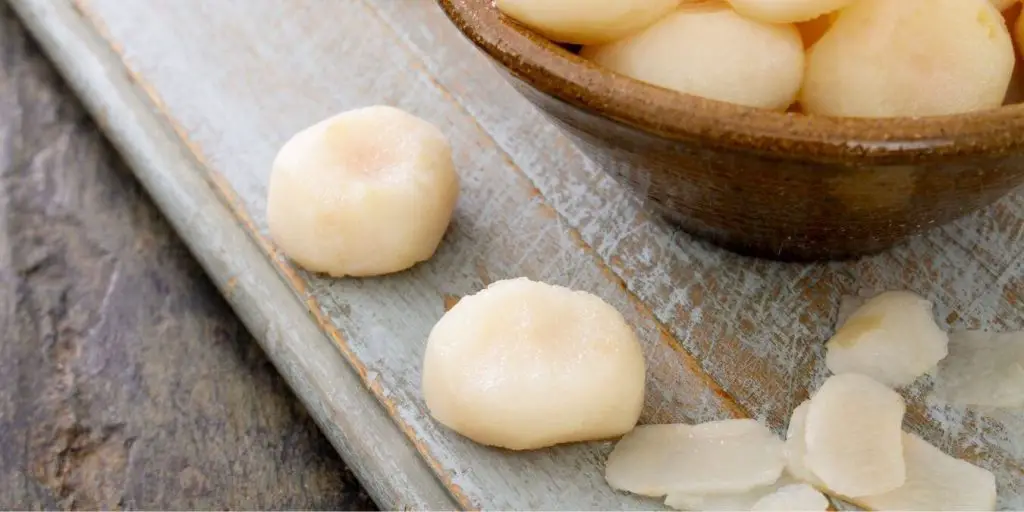
Water chestnuts can be added to almost any recipe where you would like a crunchy textural element.
In fact, water chestnuts work so well in a variety of recipes because of their ability to take on other flavors in the dish while remaining firm and crunchy.
Most of all, water chestnuts are very healthy and highly delectable. Not only can they be added as a textural element, they may also be ground and crushed into a flour perfect for baking. Anyone with gluten or nut allergies can use this flour for baking or as a gluten-free thickening agent.
Stir Fries Best Friend
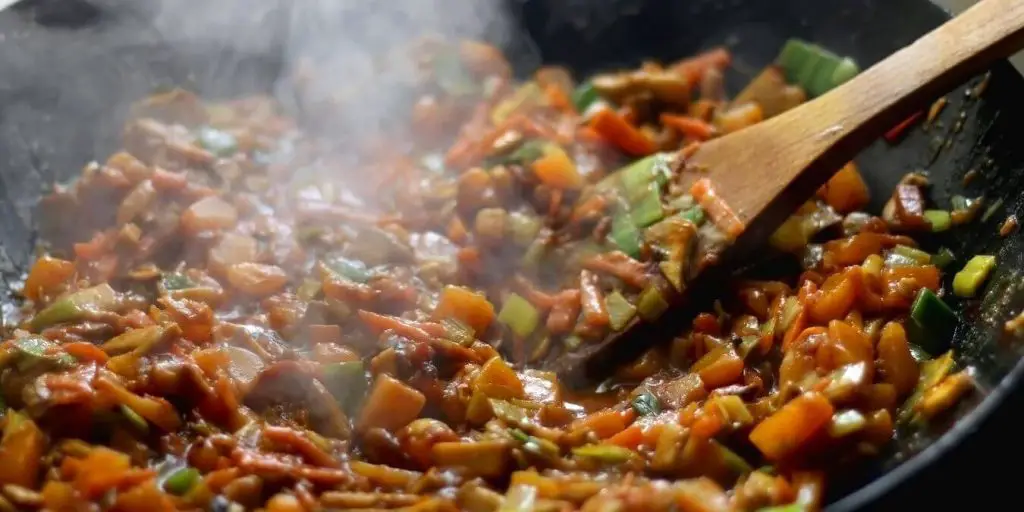
The mild, nutty sweetness of the water chestnut is commonly paired with ingredients like bamboo shoots, fresh ginger, sesame oil, peanut oil, and snow peas in Chinese stir fries.
Despite the subtle flavor, some may find the flavor of water chestnut to be too sweet. This sweetness can be easily subdued in a dish by using savory sauces, or by pairing it with a savory meat. For example, it is often used to add a crunchy textural component to the meat filling in dim sum.
How do Water Chestnuts Grow?
Water chestnuts grow under the water, in the muddy bottom. Its tube-like green leaves grow like thick rushes as high as five feet, sticking out above the water.
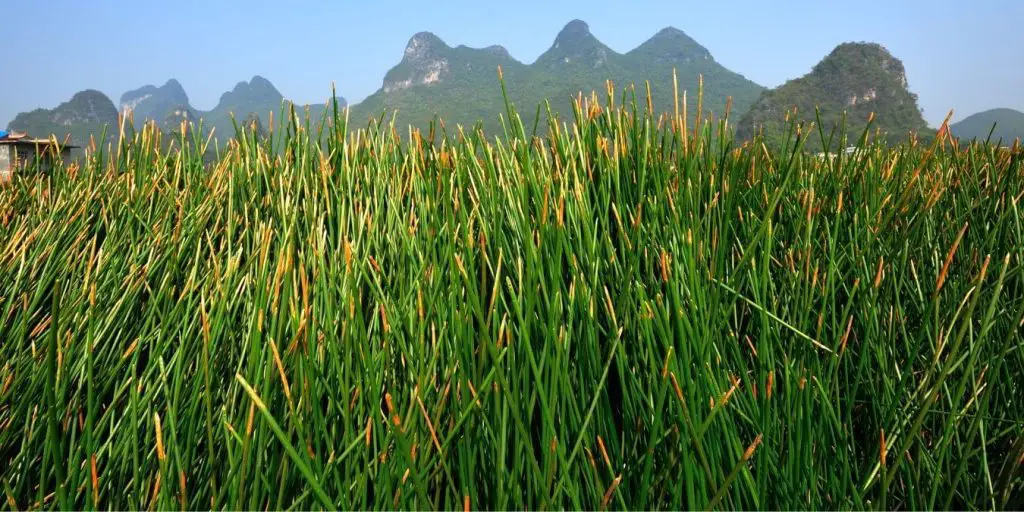
The edible part of the water chestnut is known as the corm, which is the thick root of the tuber buried in mud until it is harvested.
Water chestnuts grow from the seed corms buried in the mud at the bottom of a pond, marsh, or slow moving stream. They are often grown in paddies like rice, and when the edible corms are harvested for food, the stems of rushes can be used for cattle feed.
Best Substitutes For Water Chestnuts
When looking for water chestnut substitutes in recipes, it is important to understand how water chestnuts are used in recipes. They are usually used in preparations where their mild flavor and crisp texture shine through without overpowering the other flavors in the dish.
Water chestnuts, and the following substitutes, can all be easily incorporated into a healthy diet. Whether you are trying to lose weight, reduce blood pressure, or lower inflammation, diets rich in vegetables like water chestnuts, and these healthy substitutions are excellent options for you and your family.
Canned Water Chestnuts
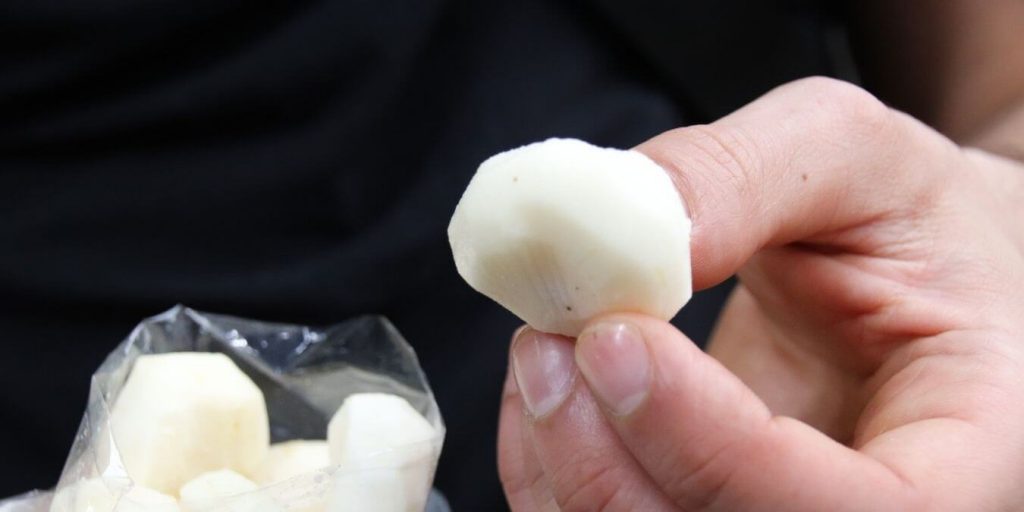
Canned water chestnuts are definitely the best substitute available for fresh water chestnuts. Water chestnuts are among the few vegetables that maintain their crisp and crunchy texture even when cooked and canned.
If you are shopping for something to replace fresh water chestnuts in a recipe, your first and best option should be the canned variety of water chestnuts.
Whenever you are looking for that light and crisp texture that water chestnuts bring to your recipes, do not hesitate to substitute canned water chestnuts. They will give you the textural component you are looking for with a flavor that is even more mild than the fresh variety.
Advantages of using canned water chestnuts
One advantage of using canned water chestnuts is that you do not need to clean, peel, or prepare them. They come peeled and sliced, just open the can, rinse off the canning liquid, and incorporate them into your recipe.
Any unused portion of the can should be used up within a few days of opening the can, and should be stored in the refrigerator.
Canned water chestnuts can be found in the international section of most supermarkets and are quite inexpensive. You can also keep them in the pantry for months before using them without losing any of the crisp texture you love.
If you’re looking for the absolute best substitutes for water chestnuts, I highly recommend trying canned water chestnuts first. However, if you need to try other options, keep reading for more options.
Bamboo Shoots
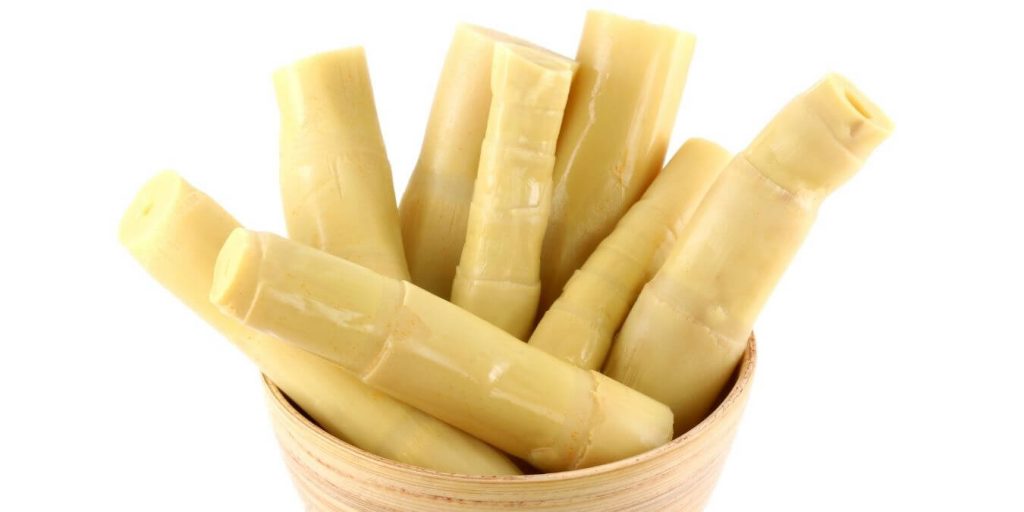
Bamboo shoots have a crisp texture that is very similar to that of water chestnuts. If you are looking for something to give you a water chestnut crispiness, bamboo shoots are a good option.
However, when it comes to flavor substitution, there are better options available than bamboo shoots.
Bamboo shoots have a harsh and distinct flavor that can be too strong for some recipes and is not easily overcome with a savory sauce. Also, because of their fibrous texture, raw bamboo shoots must be boiled before they are used.
Jerusalem Artichokes (Sunchokes)
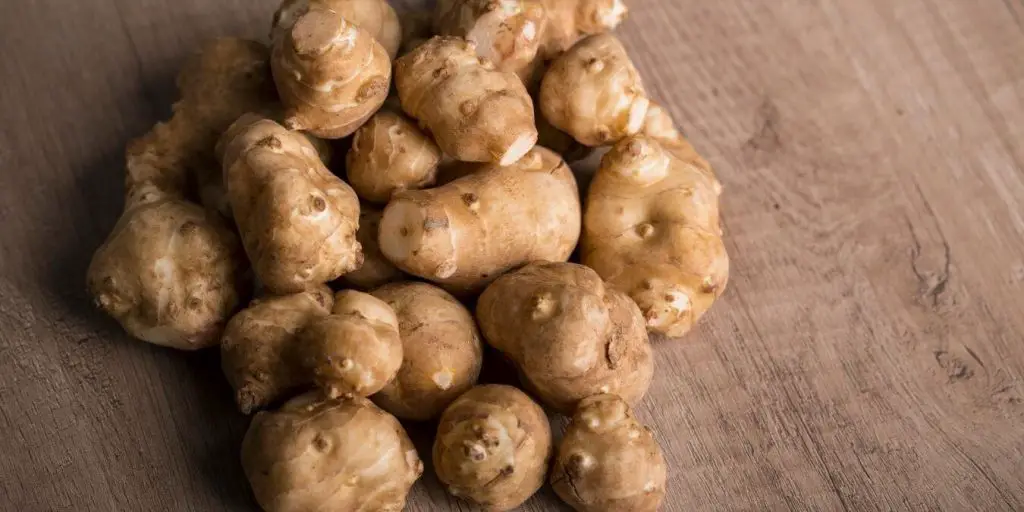
Jerusalem artichokes, also known as sunchokes, not only have a texture that is similar to water chestnuts, they are also similar to water chestnuts in that they are tubers. They have also been named after another type of plant to which they are not actually related. Jerusalem artichokes are not related to artichokes at all, but are actually part of the sunflower family.
These tubers have a brown skin, firm texture, and sweet flavor that makes them an excellent substitute for water chestnuts.
When using them to substitute for water chestnuts, it is best to use Jerusalem artichokes raw. Cooking usually softens them and reduces their sweet flavor.
Where to find Jerusalem Artichokes
Most supermarkets have sunchokes available in the produce department. When shopping for sunchokes, look for some that are quite firm and have smooth skin.
If the skin is wrinkled or dimpled, it could be a sign that it is over-ripe and too soft to retain the crunch you are looking for.
Jicama
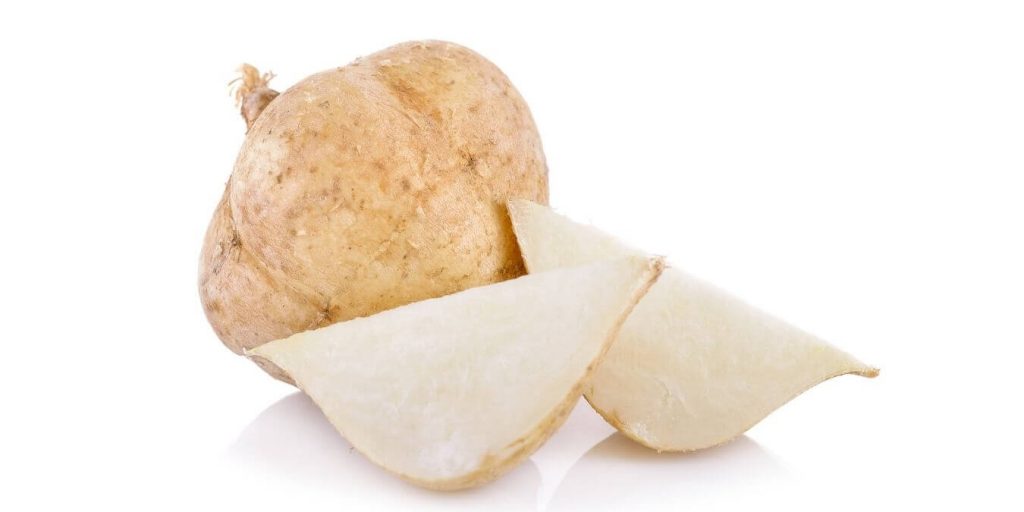
Jicama is one of your best options when looking for a vegetable to substitute for water chestnuts. Not only is jicama similar as a textural component, it also has a mild, sweet and nutty flavor. Jicama slices represent an excellent option whenever you need to replace water chestnut in your recipes, because they also resemble water chestnuts in color and mildness.
It is important not to over cook jicama as heat will soften it and caramelization will bring out its natural sugars, making it much sweeter than water chestnuts.
Jicama is also common in Asian-Mexican Fusion dishes. Like water chestnuts, Jicama takes on the savory spices and sauces very well in stir-fry dishes.
Turnips
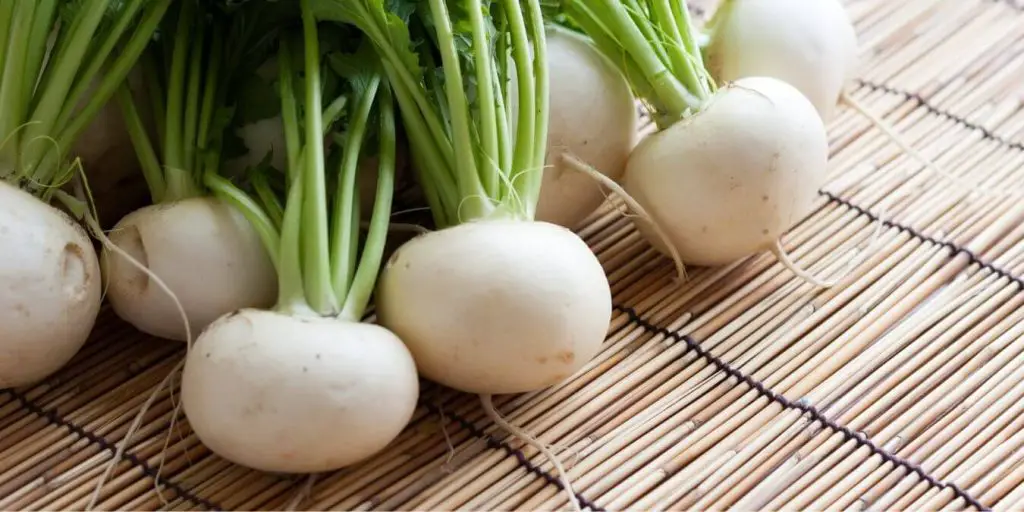
Turnips are a root vegetable with a sweet and peppery flavor that is similar to jicama when cooked. When substituting for water chestnuts, use only the root bulb. It has a crisp texture and light color like a water chestnut.
Cooking the turnips will mellow their peppery flavor, bringing out a sweet nuttiness. This is similar to the water chestnuts that you are looking to replace.
Turnips are easy to find in stores and relatively inexpensive. However they are not necessarily the best option as a substitute for water chestnuts. I would recommend using Jicama or Jerusalem artichokes first, if you can.
Use Your Creativity
Now that we have taken a look at some of the best ways to substitute for water chestnuts in recipes, the best thing you can do now is experiment with these options. Try some recipes, and see what works best in your kitchen.
Maybe you have loved Chinese cuisine all of your life. Or you are just beginning to gain an affinity for Asian recipes and ingredients. Regardless, you are sure to find ways you can incorporate these ingredients into your family’s healthy diet.
